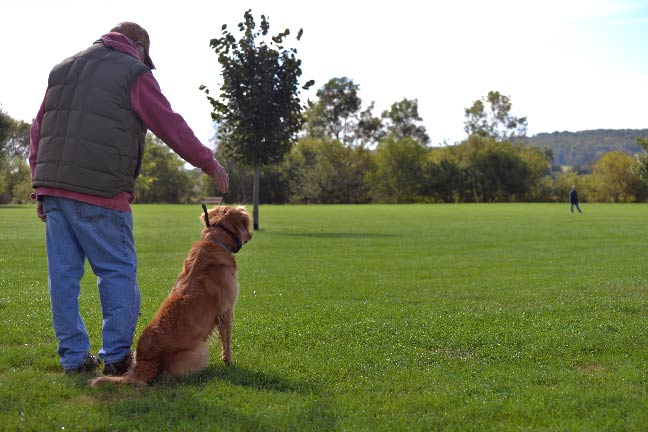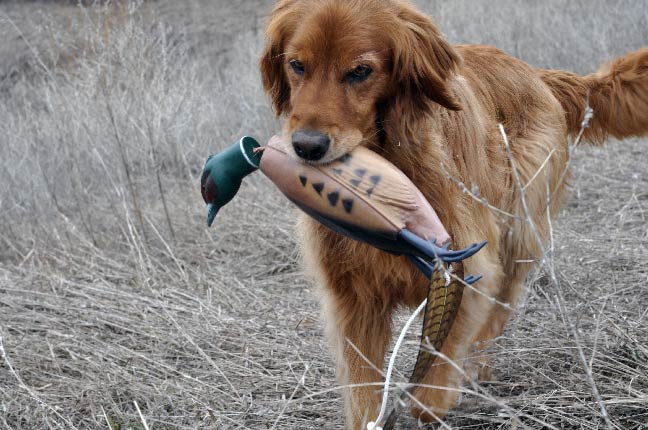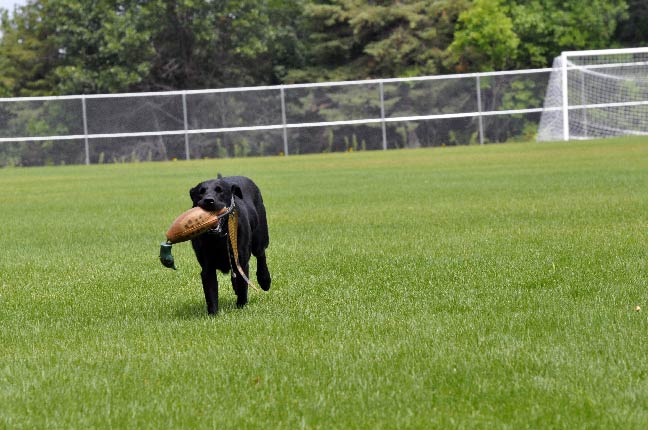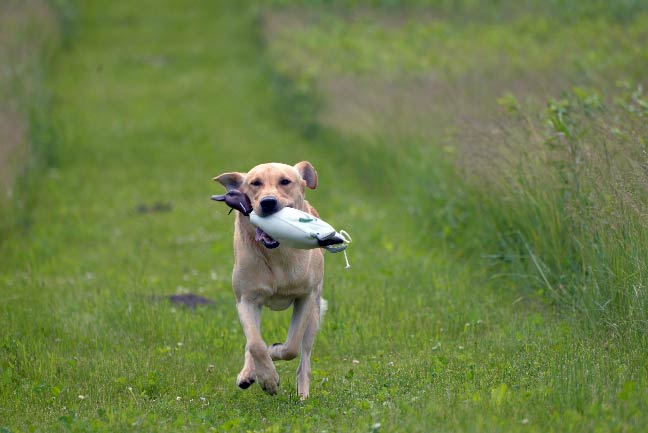When you watch a good upland dog working a pheasant field, you'll notice that their behavior might appear random, but it's not. A seasoned dog will quarter into the wind and only take a detour if there is some cover that looks especially good. If a ringneck busts from a patch of a sumac, you can bet that the dog will swing downwind of every patch of sumac after that.

They learn in the field, and it's an amazing thing to watch no matter whether you're hunting roosters, quail, grouse or any other upland quarry. This is a thing of beauty to watch and often feels totally unrelated to any influence we have, but it's not. Just like a university should theoretically teach students to think critically and not just memorize facts, a dog-training program can be created to teach our dogs to learn.
A big part of this is simply changing up where we train.
Falling Into A Rut
It's easy to get into a training rut with our dogs. Stepping into the backyard to toss a dummy each day is a simple way to get our dogs some exercise, and convince ourselves that we are devoted to training. Now, this is better than not training at all, but it falls way short of several aspects that matter.
[caption id="attachment_13057" align="aligncenter" width="648"]
For starters, the same routine does nothing for keeping a dog interested in the activity. A high-drive dog will retrieve all the same, but it's not going to do as much for that dog as a change of scenery will. On the other hand, a lower-drive dog might show disinterest after a few tosses, and when that happens, you've lost control.
To wring the most out of training sessions and teach your dog to learn, scout out locations near your house in which to train. I live in the suburbs of the Twin Cities, so where I take my dog isn't always as ideal as I'd like it. Still, we work in neighborhood parks, on soccer fields and on a few patches of public ground. Since she's a duck dog as well as an upland retriever, we also have a couple of ponds, a lake and a canoe landing on a decent-sized river that we frequent. If you look around, you can find plenty of new and interesting places to train.
Drill-Specific Spots
The good thing about working a dog in new scenery is that you can structure training drills to the cover that is available. For example, some of the parks I train at have baseball or soccer fields that are perfect for long-distance work. They also have a coupe of acres of native prairie grass next to the fields that are ideal for trailing drills.
[caption id="attachment_13058" align="aligncenter" width="648"]
When you mix things up this way, you keep it fun and challenging for your dog which promotes problem solving skills — the very kinds of skills he'll need to develop to continually suss out grouse in the big woods or quail in the vast tracts of public land spread throughout middle America.
This also allows you to develop as a trainer. When your dog doesn't know the routine, then your dog can't cheat, which is a good thing. This allows you to guide him through the process of whatever drill you've set before him, and correct appropriately. The more new scenarios you work together with your dog, the better you'll both become.
But there is one catch.
No Trickery
The overarching goal of all training is to develop confidence in your dog. There are all kinds of sub-goals involved, but the main theme is to encourage the dog to have success doing what he is going to be asked to do in the field. If you set up drills that are too challenging, then you've created a mini-disaster that doesn't do either of you any good. Success is everything, so make sure it happens by structuring training to be challenging, but achievable.
[caption id="attachment_13059" align="aligncenter" width="648"]
If you increase the challenges as your dog becomes more comfortable, pay attention to him. If he struggles too much, back up a step or two and keep working. Changing scenery is part of the overall process of taking baby-steps to fine-tune a bird-hunting machine. Patience is your friend here, as it is in all training.
Beware The Dangers
When you decide it's time to work hand signals at the neighborhood park, be honest about the control you've got over your dog. If there is a busy road nearby, you'd better make sure that you can always call your dog back to you. If not, don't risk it. Also, be aware that you may encounter other dog owners, who might not have friendly dogs or who simply might not want a crotch-sniffing visit from your retriever.
This is one of the reasons I work my dog in certain parks during the midday, or early in the morning when fewer people will be out. My Lab doesn't have an aggressive bone in her body, but she does believe that every person she meets is a potential BFF.
Conclusion
Change it up. Work your dog in new areas as often as possible. This goes for eight-week old pups and prime-of-their-life dogs. This is the best way to keep a dog interested, engaged and learning — all of which will translate to a better dog in the field come hunting season.






